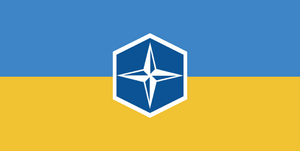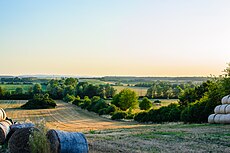South Kirav

South Kirav is a theme of the Kiravian Federacy and a historical and cultural region that encompasses the southernmost provinces of Great Kirav. It is noted for its strong regional identity, its unique regional culture distinct from the national mainstream, and for its role in the development of Coscivian civilisation. Many important events that have shaped Coscivian and Kiravian history and culture, such as the discovery of beer, the domestication of cats, and the adoption of Christianity occurred first in the South.
South Coscivians are the majority ethnic group in South Kirav, and the prevailing language of the region is the South Coscivian language, also known as Deskan.
Geography
South Kirav is mainly a broad peninsula at the southernpoint of the Great Kiravian island continent. Its topography is mostly low-lying and level plains, bounded by mountains across much of its northern frontier. The Issyr River bisects the region with its southward flow, emptying into the Odoneru Ocean near Tolôn.
South Kirav has a humid, lower-mesotemperate climate with oceanic characteristics in the west and continental charateristics in the east. It is the warmest part of Great Kirav, with the mildest winters and longest growing season. It is the region of the country most vulnerable to Odoneru hurricanes.
Economy
South Kirav is the most agriculturally productive area of the Kiravian mainland, and has been the nation's breadbasket since ancient times. South Kirav offers excellent conditions for the cultivation of cereals, chiefly wheat, barley, and (increasingly) maize. Rye was a major crop historically, but rye acreage has declined in the South in favour of wheat and maize. Potato, an indispensible staple of the Kiravian diet, is also widely grown as a rotation crop and on more marginal land. Hops are grown mainly in the western part of the region. Flax is still grown in significant quantities, albeit far from its peak during the Age of the Sail when flax was a strategic resource necessary for the manufacture of sailcloth. The Southern provinces lead the nation in their output of various vegetables, most notably cucumbers, cabbage, collard, celery, and spinach. The region accounts for a majority of Great Kiravian production of sunflower and sunflower oil, plums, pears, and soy. As for livestock, large-scale swine-rearing operations are found throughout South Kirav, producing much of the country's pork, and there are also ranches raising beef cattle, whereas more northerly regions of the country are more adapted to dairying.
Food and fibre processing are major industries.
Five nuclear power plants are located in South Kirav, operating a combined total of fifteen reactors that together generate over 80 gigawatt-hours of electrical power annually. Tolôn is an important hub for the oil and gas industry, and is home to major energy companies, such as Kiro-Audonian SakOil and Waveland Energy ÁLO.
South Kirav is less economically developed than other seaboard areas of Great Kirav, partly due to an institutional legacy rooted in Kiravian manorialism that disincentivised commercial and industrial development, and partly due to repressive policies enacted by the Kiravian Union. Corruption and the poor quality of public education in the South remain persistent obstacles to development in the post-reunification era.
Provinces
South Kirav comprises six provinces, all of which enjoy statehood status.








